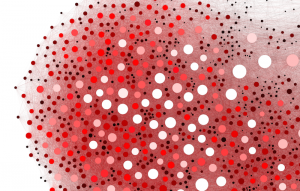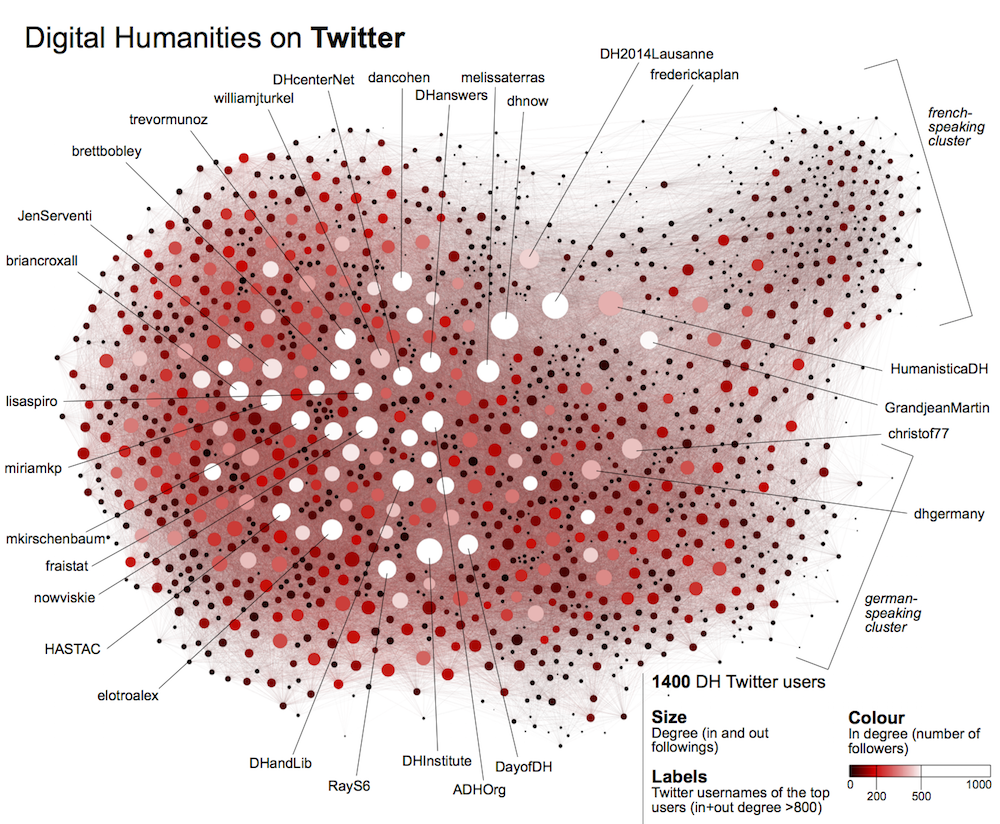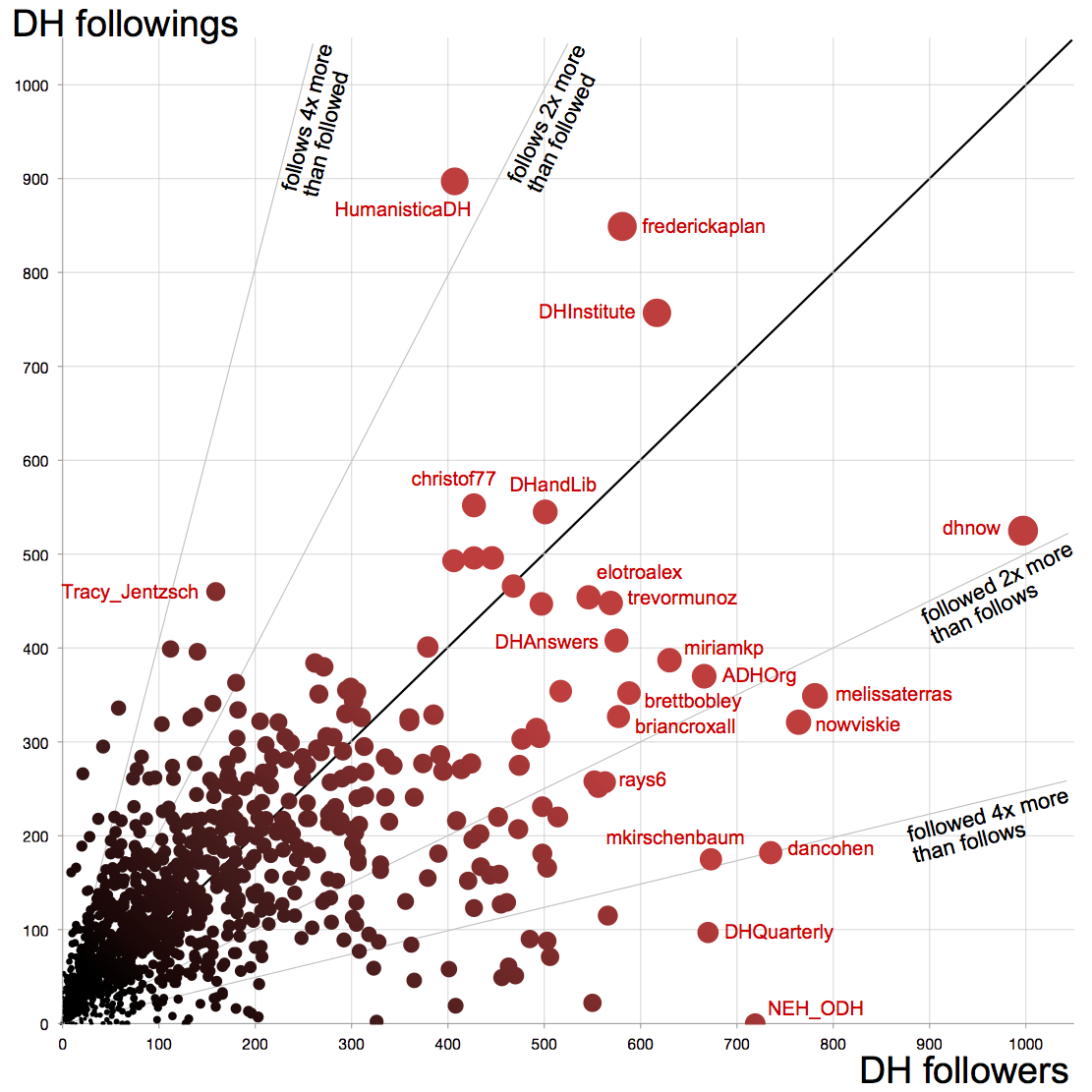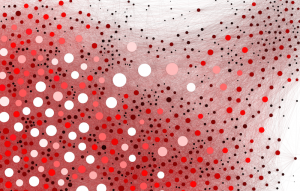
Twitter helps disseminate information and knowledge. This is especially true within the digital humanities community where this social media takes an important place. Who’s following who in this network ? This post provides an analysis of the relationships between 1400 DH researchers, engineers and enthusiasts, showing that this little community is very dense, such a small world in which no one is very far from the neighboring cluster.
- See the DH “who’s following who” 2014 edition (800 users)
Who’s following who? The network
This graph consists of 1,434 nodes connected by 137,061 directed edges, each symbolizing a user “following” another on Twitter:

CC-BY-SA Full screen here | Version with all names here
Following and being followed
Let’s have a more specific look at the followings/followers ratio:

Notable positions are occupied by the same users than in the previous analysis (2014). The most followed account, @DHnow, is followed by 997 digital humanists and follows 525 of them. Most of these notable users are in the lower right part of the plot, since they are followed by more other list members than they follow themselves. The different uses of Twitter are numerous: between pop stars/influencers/snobs/guru/… who hardly follow nobody and networkers/technology scouts/… who follow a large number of accounts.
Tables
[twocol_one_first]Followed by digital humanists [/twocol_one_first][twocol_one_last]Following digital humanists
[/twocol_one_first][twocol_one_last]Following digital humanists [/twocol_one_last]
[/twocol_one_last]
List composition and bias
 This Twitter list contains 1400 accounts manually identified as members of the “DH community”. The data analyzed here has been compiled on July 2nd 2015.
This Twitter list contains 1400 accounts manually identified as members of the “DH community”. The data analyzed here has been compiled on July 2nd 2015.
This list is still growing, feel free to follow it (directly on Twitter), submit your own lists to complete it (by leaving a comment below), or to analyze yourself the content of the tweets posted by the list members.
[twocol_one_first]
Such a list will never be complete, partly because digital humanities are a field in which actors do not always recognize themselves as a part, and partly because every DH scholar does not write in his Twitter bio that he’s practicing DH. That said, this list was also developed taking into account users who actively tweeted during several DH conferences in 2014 and 2015, as well as many lists of committees of national and international associations. This operation can enhance the “small world” appearance but also reveals how the community is structured by a small number of centralized influencers.
We still have to discuss the European-centrism impact of the author of the list on the French and German speaking highly visible clusters. Are these “regions” of the community actually more highly agglomerated, or is it simply because these populations have been searched more completely?
[/twocol_one_first][twocol_one_last]Tweets de https://twitter.com/GrandjeanMartin/digital-humanities [/twocol_one_last]
Acknowledgements: Many thanks to @orkkaphly for his precious help in data processing. Visualizations with Gephi.
Want to be added to the list ?
Drop your Twitter username here:

Many thanks for this analysis. It would be interesting to have the same analysis for Digital Art History #digitalarthistory
Check out: http://rightrelevance.com/search/influencers?query=digital%20humanities.
We do something similar algorithmically and at scale.
Excellent initiative! Digital Humanities are really on the map now. And I’m delighted that for once, DH activity in continental Europe has been registered thoroughly; it’s not always easy to know about these DH tweeps, and we don’t want to miss a thing!
How could one get twitter data free for reaserch on business and networks for example?
Hi, you have to create a “developer” account on Twitter and connect to the Twitter API (see documentation).